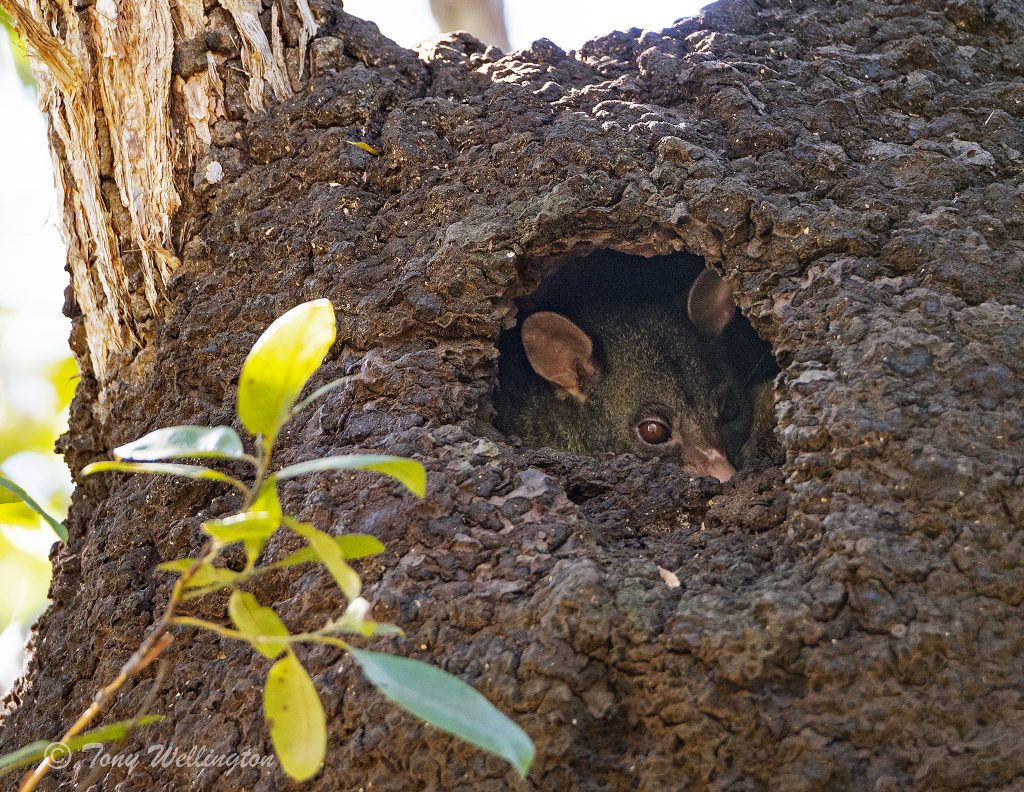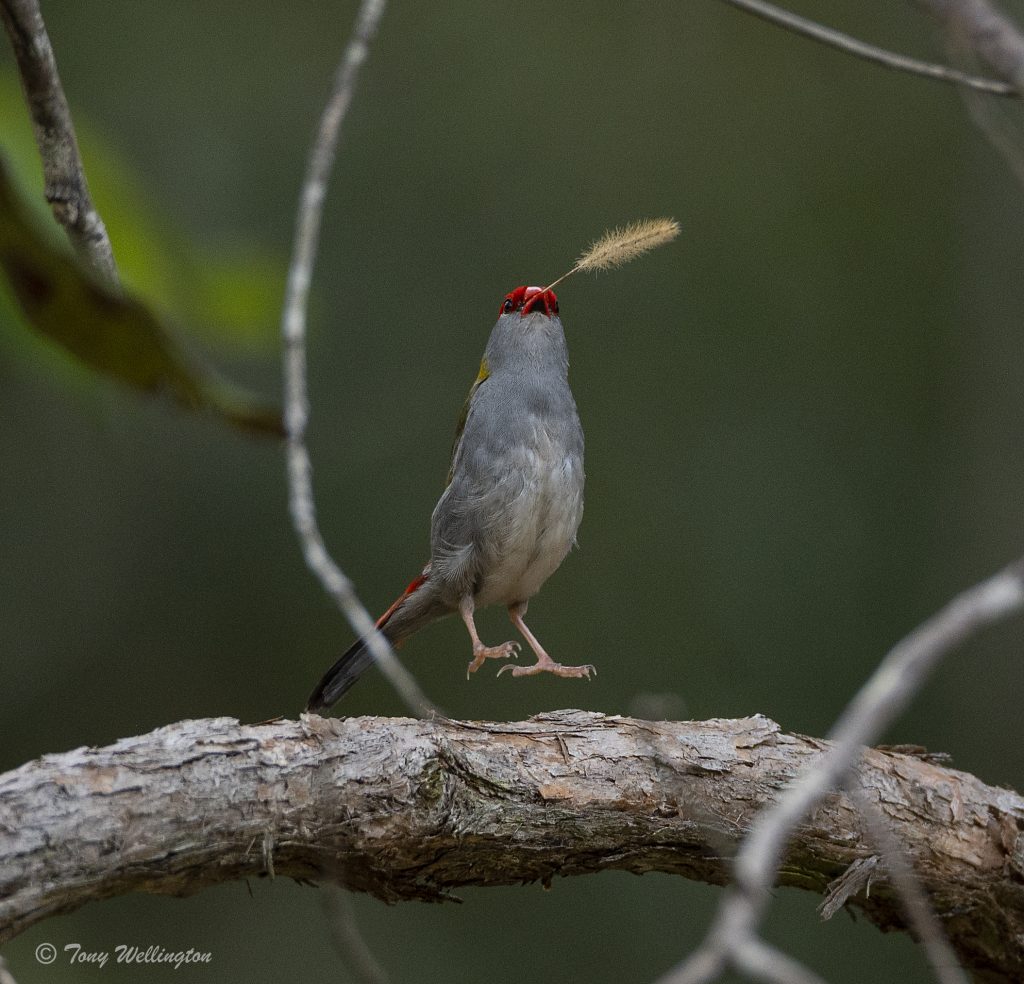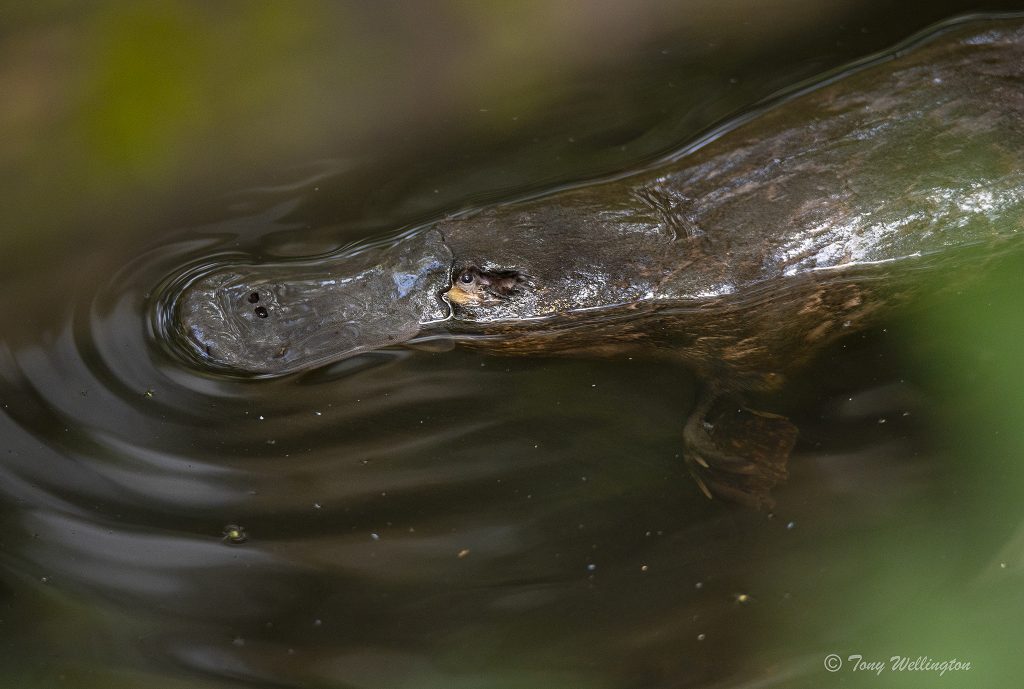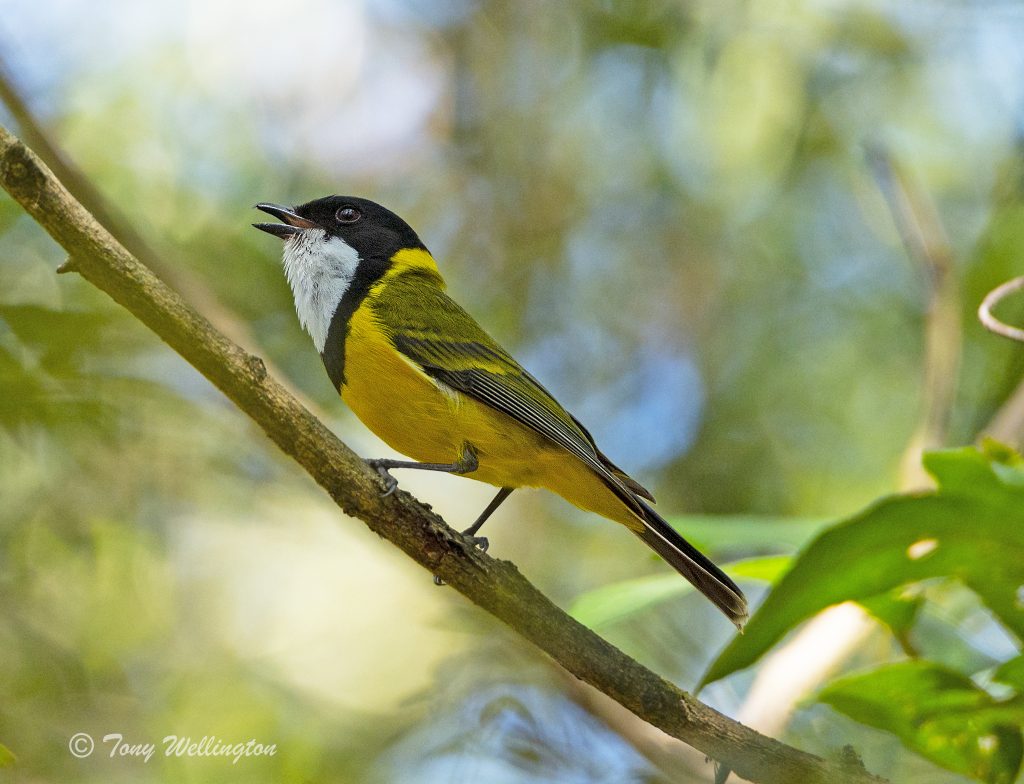
Have you ever seen the delightful face of a Short-eared Brushtail Possum peeking out of its hidey-hole in an arboreal termite mound?
How about a Platypus surfacing to grind up its catch? Or a Red-browed Finch leaping up and down on the spot with a flower in its beak (it’s called a stem display, performed to attract the opposite sex)?
All of this and much more has greeted me on frequent visits to one very small patch of Noosa Shire.

When I first moved to Noosa over two decades ago, I inevitably explored my local area in the hinterland. Pretty soon I came across a one-hectare parcel of land surrounded by roads and rural properties. It was former grazing land that had recently been planted with native seedlings. Over the years I have watched those plantings mature, and that single hectare has become one of my favourite haunts as a nature photographer.
The land was formerly under Noosa Council control but ceded to SEQ Water when local water assets were commandeered by the State Government. It is in the catchment for Lake McDonald, with a tributary of Six Mile Creek running through.

Today, it’s a haven for a breathtaking range of fauna, and living proof of the value of revegetation efforts. Superbly planted out by Noosa & District Landcare all those years ago, it now supports a variety of tall trees above a rich understory of vines, shrubs and sedges.
After just two decades, it gives the impression of being entirely natural and established.

Recently koalas have been found on the site: proof that this little patch of vegetation acts as an important corridor and waystation for this iconic species.
Amongst the other wildlife I have photographed in this tiny park are kangaroos and wallabies, a vast array of honeyeaters, fairy-wren and the like, and even ground-dwelling native quail.

The occasional bird of prey stops over in the park, spooking the residents who immediately go quiet. The rest of the time it is an audial delight. Numerous whipbirds spend their days calling to one another, their stockwhips almost painfully loud.
In Springtime the bush comes alive with the melodious calls of Rufous and Golden Whistlers. And a pair of Catbirds regularly make their presence felt with their very peculiar cat-like wail (which many people hear as a crying baby).
My most prized encounter was with a striking, yellow-and-black Regent Bowerbird, the only time I have managed to photograph one of these birds in our Shire.

These days we only seem to hear tales of environmental gloom and doom. But we also need positive stories that bring us hope rather than frustration and helplessness.
If life on Earth is to survive humankind’s rapaciousness, we need not only to reduce habitat destruction, but also to seriously begin replacing lost habitat.
This one-hectare oasis in the Noosa Hinterland demonstrates just how incredibly effective such efforts can be.

This Post Has 3 Comments
Always fantastic photos and descriptions
Fantastic photos.
Great article